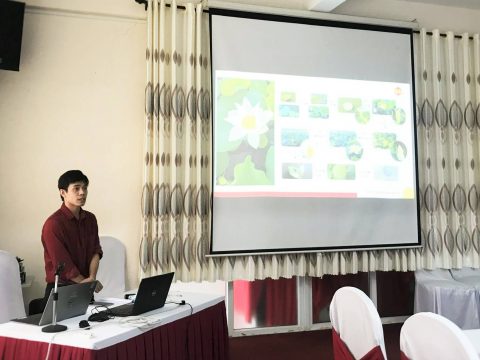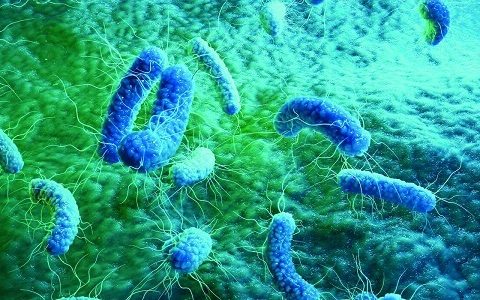Anti-Aging Discovery Could Lead to Restorative Skin Treatments

Despite a multi-billion-dollar skin care industry and plenty of marketing claims, nothing exists that can prevent our skin from turning into tissue paper as we age—except, perhaps, religiously wearing sunscreen. Accumulated damage from UV radiation and other age-related stressors drains the skin’s pool of renewal cells—or stem cells—and there is no way to stop or slow this process.
But hope for skincare junkies is on the horizon. A study published April 3 in Nature provides new insight into how stem cell loss occurs and even identifies two chemicals that may be able to prevent it.
The research, led by Emi Nishimura, a professor of stem cell biology at Tokyo Medical and Dental University in Japan, revealed that aging and UV exposure deplete stem cells of a crucial collagen protein. Skin aficionados may recognize collagen as a key player in maintaining strong, youthful, elastic skin. The weakened stem cells no longer divide normally, and are ultimately forced to turn into adult skin cells. Over time, so many stem cells become damaged that there aren’t enough healthy ones to replace them.
“I think it’s a beautiful study,” says David Fisher, a professor of dermatology at Harvard Medical School who was not involved in the research. “I think it’s a very elegant analysis, but also it has some very practical mechanistic insights into how this is happening, and even potentially actionable ones to promote youthfulness.”
Our skin is divided into two sections: the epidermis on top and the dermis underneath. The epidermis is what we conventionally think of as our skin and is made up of many layers of cells, while the dermis consists of connective tissue, hair follicles, blood vessels, and sweat glands.
As part of normal skin health, the top layer of the epidermis is constantly being sloughed off and replaced from a self-replenishing pool of stem cells that hangs out on the bottom (or basal) layer. These stem cells have roots that anchor them to a thin piece of tissue called the basement membrane that connects the epidermis and the dermis. The tether to the basement membrane is essential for maintaining a cell’s “steminess”—its ability to replicate and mature into another type of cell.
Most of the time, the stem cells in the epidermis divide horizontally, cloning themselves and adding to the renewal pool. Sometimes, though, they divide vertically, and the new cell starts to mature into an adult skin cell, which is gradually pushed up through the layers of the epidermis.
This type of cell turnover—replacing older cells at the top of the epidermis with younger cells from the bottom—explains how cuts heal and skin stays young looking. As people age, however, the pool of stem cells becomes depleted and cell turnover slows, eventually leaving people with thin, fragile skin.
“The ultimate question, which [the study is] trying to address, is why are there fewer cells? Why do we lose stem cells as we get older?” says Terry Lechler, an associate professor of dermatology at Duke University who was not involved in the research. “I think that’s the real crux and the really interesting question.”
The study suggests that the stem cells that divide vertically do so because they are damaged through regular aging and the normal cell turnover process, as well as exposure to UV light or other types of toxins. And not only does the new adult cell start its journey through the epidermis, the original stem cell also gets pushed off of the basal layer, forcing it to mature. This is because the damaged stem cell’s roots have become weakened, so it can no longer sufficiently anchor to the basement membrane. The researchers describe this step as a kind of competition, the neighboring healthy stem cells banding together and forcing the weak stem cell off of the island.
“It appears that this is due to a quality-control mechanism whereby a skin stem cell that gets damaged is basically purged from the skin,” says James DeGregori, a professor of biochemistry at the University of Colorado Denver who wrote a commentary article to accompany the paper. “You could almost imagine all of these stem cells are kind of jostling for position, and if you’re really gripping that basement membrane, you’re going to do better.”
At first this competition is beneficial, ridding the skin of malfunctioning cells or even cancer-causing mutations. However, at a certain point too many stem cells become damaged and they begin to outnumber the healthy ones. When this happens, the skin can no longer effectively rejuvenate itself or respond to injury. “Stem cell competition between epidermal stem cells sustains skin youthfulness, but the decline of the competition ends up with skin aging,” Nishimura explains.
The linchpin in this process is collagen 17, a specific type of collagen protein that is critical for rooting the stem cell to the basement membrane. As stem cells become damaged, they lose precious amounts of collagen 17. The more protein they lose, the weaker their bond to the basement membrane, until eventually they are forced out by neighboring healthy cells.
The good news is that there may be a way to increase or preserve levels of collagen 17 in stem cells, staving off this process of skin aging. Nishimura showed that two experimental chemicals, Y27632 and apocynin, applied topically can increase collagen 17 levels in cells and even promote wound healing.
This does not mean you should purchase the next skin care product you see that has “collagen” or “stem cells” on the label—there is no evidence that anything on the market affects this pathway. But it does suggest a scientifically backed rejuvenating cream could be on the horizon.

“Loss of collagen protein depletes renewal cells that serve as skin’s fountain of youth”
(Source: Getty Images)
Original published by Scientific American with slightly modification




